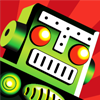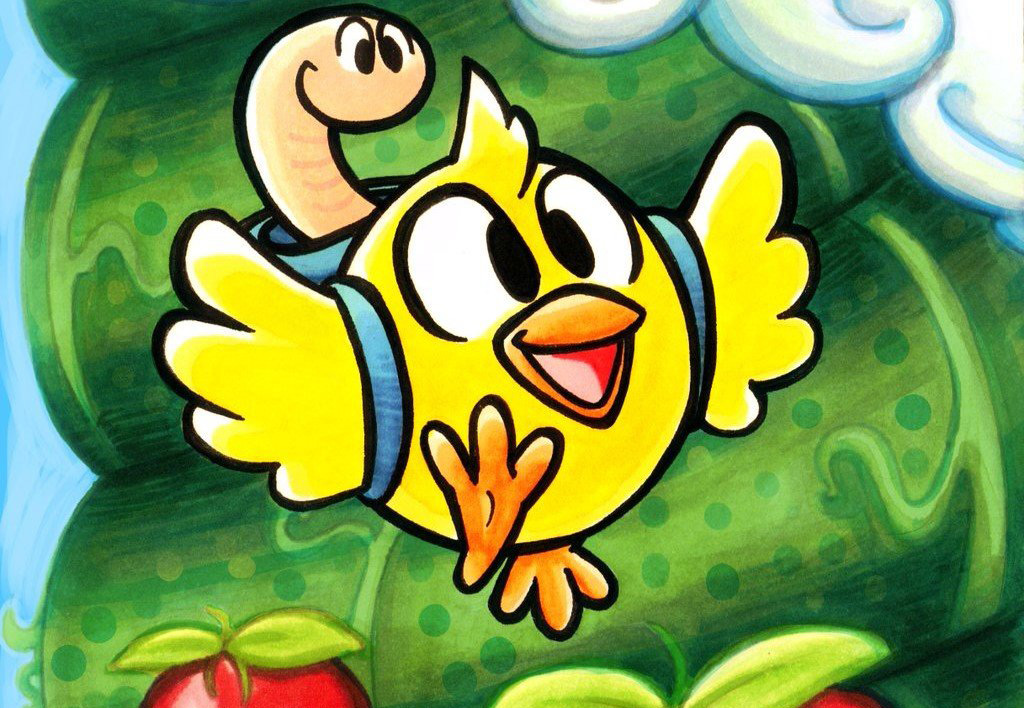I feel like chicken tonight
I have to hand it to Atooi. This late in the 3DS’s lifespan, not many tiny indie teams will attempt a project requiring dedicated servers and a great deal of community involvement to make it work. Fewer still will contemplate launching a new IP instead of doing something with more name recognition.
It’s a gamble. Will it work? Beats me, but if there are any 3DS owners out there jonesing for a new, intuitive level creator, they should take a good long look at Chicken Wiggle.

Chicken Wiggle (Nintendo 3DS)
Developer: Atooi
Publisher: Atooi
Released: August 17, 2017
MSRP: $14.99
I feel I have to write about the campaign to Chicken Wiggle, the one where a pogo stick witch kidnaps a bunch of birds and is pursued by my chicken and worm duo across 48 levels, only because it is there. Are the levels fun? Eh. It takes roughly half the game to see some inspired design and challenging concepts, but reused gimmicks, such as predictable placement of hidden collectible letters, are sewn throughout the ultimately underwhelming adventure.
The titular chicken isn’t much of a hero alone. He, or she… let’s go with she, has a weak jump and a slight peck to knock out enemies. The worm buddy does most of the work. Like Ristar’s arms, the worm can stretch great lengths to stun baddies as well as grab ceiling and wall pieces. Together they’re a formidable pair for the many challenges I hope to face in the user-created levels.
Every stage in the campaign, save for the one boss battle, comes from the extensive level creator which is the real star of Chicken Wiggle. Across those 48 levels, I get some inspiration for what I can do with it but none of them scratch the surface of what is possible if I let my imagination run wild with the tools Atooi has created. In fact, the very first downloadable level I play, a Jools Watsham design, is cleverer than anything included in the game proper.
The editor is available right from the start and there is no waiting to unlock everything. I name my level, select a background theme, give some hints on what people must do in it, choose some keywords, and, central to the excellence of this software, I pick which task the player must complete in order to beat the level. Throughout the campaign, the only objective is to rescue a trapped chicken. Here, it’s just one of the options. I can instead require players to kill all the enemies, find a key and open an exit door, help a skeleton reach his grave and more. I can’t begin to express my appreciation for this type of creative freedom.
Even with the limitations of the editor, the fact I decide what constitutes a win here completely changes my approach to design. I build my first level, Flightoid, modeling it after a legal pad blueprint I work up during lunch. With a maximum 99 enemies I can deploy in a level, but an endless amount of spiked balls I can use, I decide on a vertically oriented stage designed around the flight suit, one of several power-ups available. With the stylus, constructing my level is a fluid experience. It’s as intuitive as I expect it to be and in no time I have a stage that sort of resembles my earlier drawing.
Like with Super Mario Maker, if I want to upload my level I have to beat it first. This includes gathering up any collectibles I put in it. It takes me roughly ten attempts before my I can 100% my level and in seconds it’s online with people playing it.
Finding levels others have created is a breeze. I can sort by what is the most popular, most played, official Atooi levels, the latest added and more. I can also search by level name, keywords, level creator and level ID number. Those I like I can mark as my favorites so long as I actually complete them. It really has everything I need to find what the community has concocted so long as the service stays available.
The game is good as is, but some quality-of-life improvements can go a long way. Casting aside any issues I have with the campaign, the text throughout is extremely small. In the level creator, there is no tutorial or write up in the digital manual that explains the many pieces I have available to me. There is one default level size, a giant square, and while it is big enough for the devious labyrinths I plan to create, having a few different sizes and shapes to choose from can help speed up the building process. There is also no way to zoom out and see my creation as a whole. The upper screen is wasted real estate as it shows what I already see on the touch screen.
It’s not perfect, but Chicken Wiggle tickles the creative part of my brain that loves drumming up platformer levels when I should be doing actual work. The campaign can be better, a lot better, but the hours I’ll spend with this game will not be going back over those levels. I’ll be spending them making my own little masterpieces and that’s the part this game mostly gets right.
[This review is based on a retail build of the game purchased by the reviewer.]


